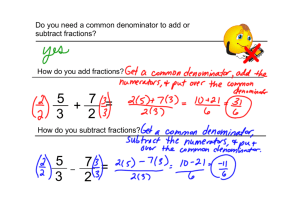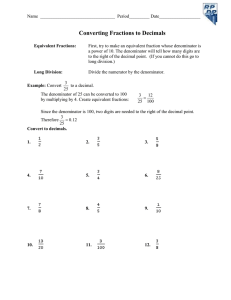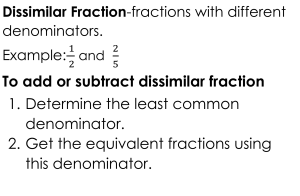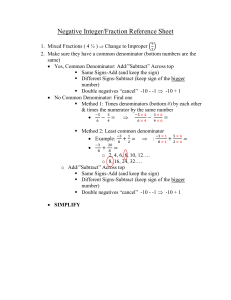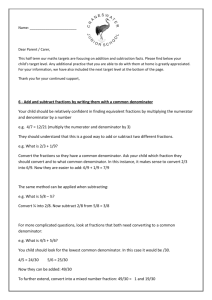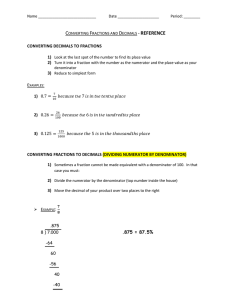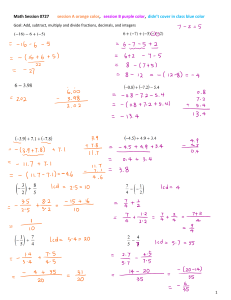Why did we need a common denominator to add and subtract
advertisement
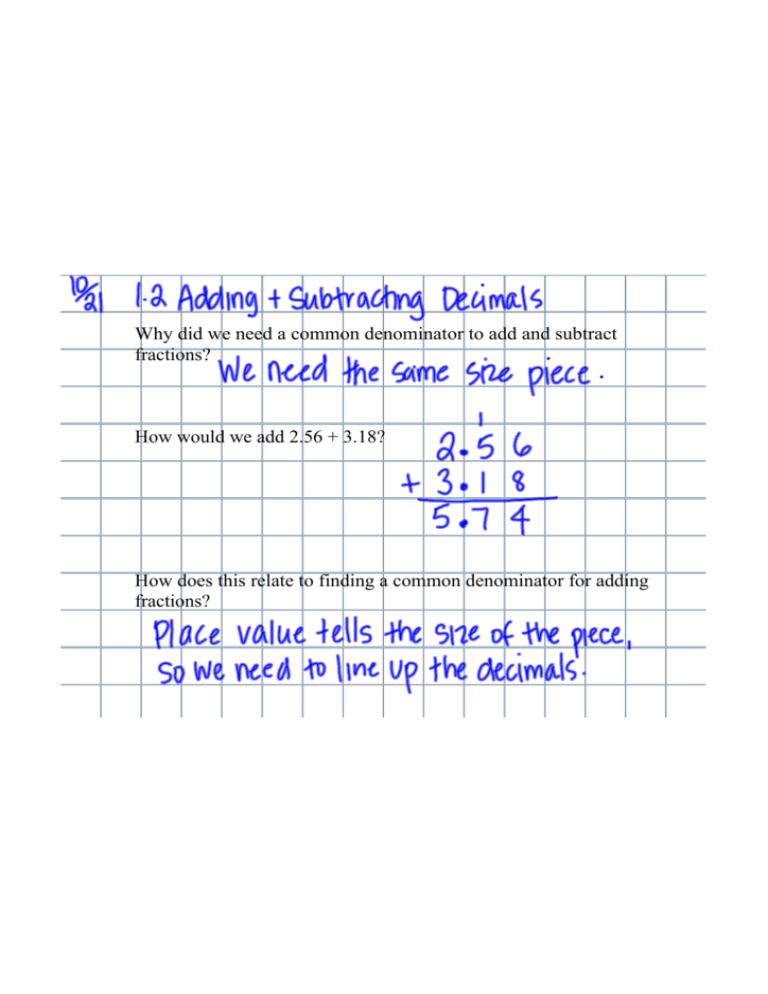
Why did we need a common denominator to add and subtract fractions? How would we add 2.56 + 3.18? How does this relate to finding a common denominator for adding fractions? Ex 1: Add. (It may be helpful to use graph paper to help line up digits.) a. 4.56 + 2.9 b. 102.8 + 3 c. 0.564 + 0.8 + 3.1 d. 16.2 + 23.5 + 3.8 Should the rules be the same or different for subtracting decimals? Ex 2: Subtract. (It may be helpful to use graph paper again.) a. 3.785 ­ 0.32 b. 25.1 ­ 15.06 c. 9 ­ 2.3 d. 100 ­ 31.93 Compensation is easier than borrowing. Work your way up. 100 ­ 31.93 Try these: a. 40 ­ 29.1 b. 180 ­ 173.82 Homework: 13/ 2­18 x2, 31, 34­37, 42­46 x2


